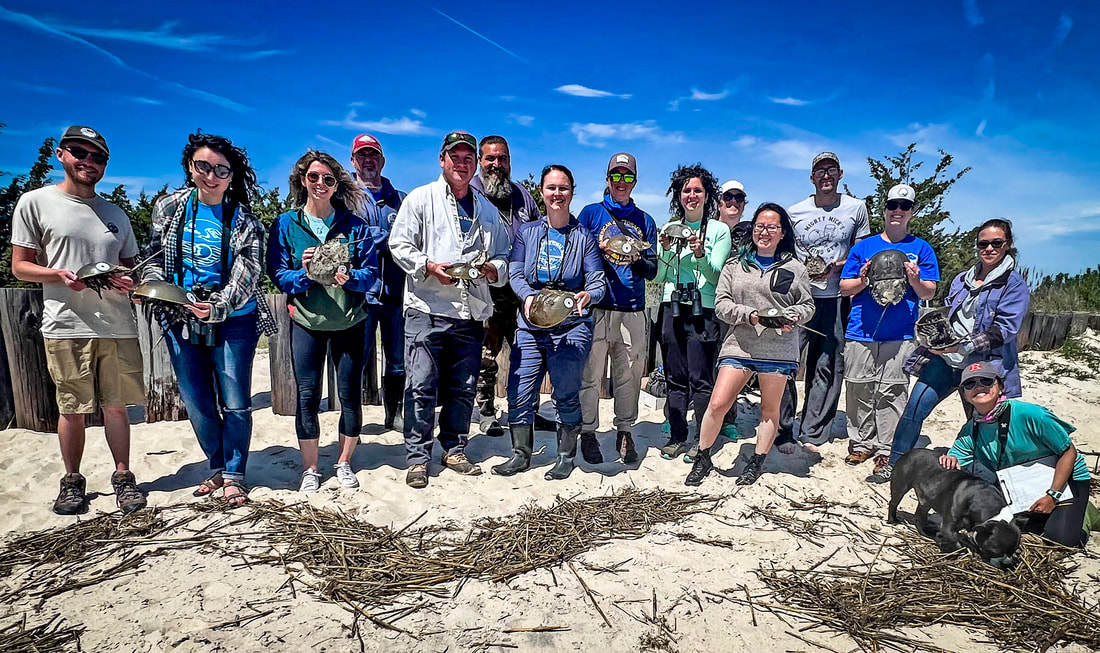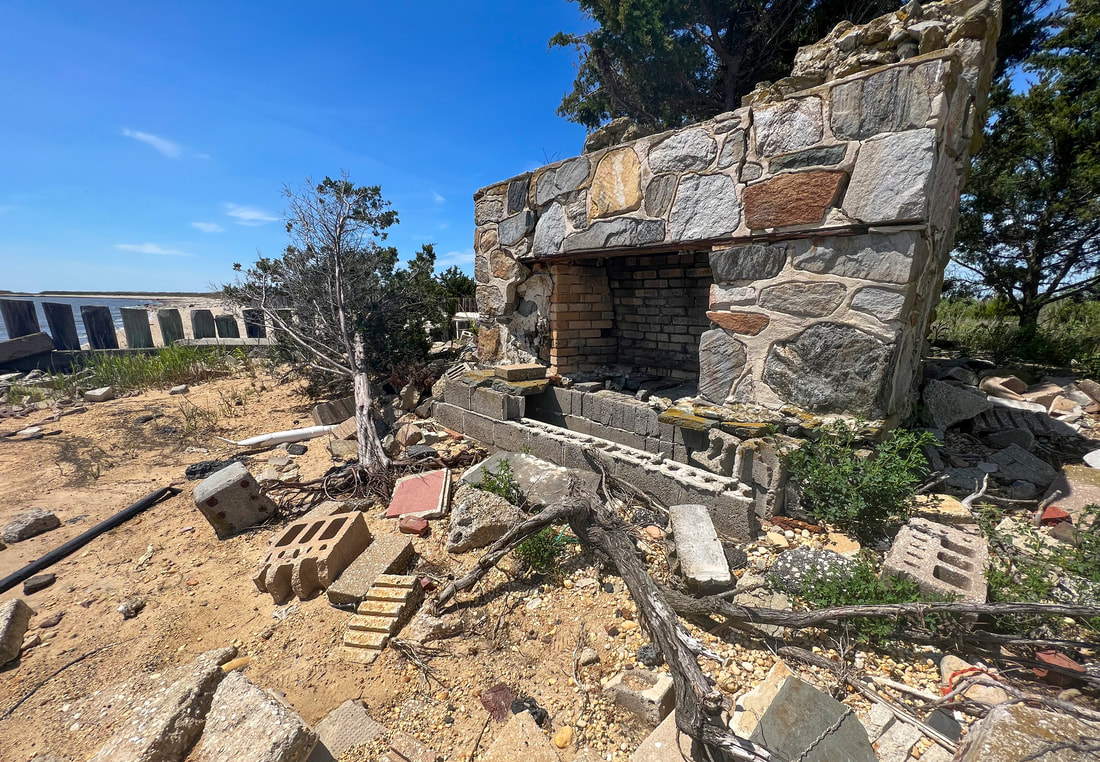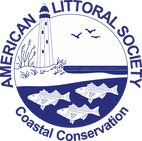|
During the months of May and June, horseshoe crabs gather on Delaware Bayshore beaches by the thousands for an annual rite of spring that dates to the days of the dinosaurs. Like those ancient creatures, many of those who work for the Littoral Society gathered on one of those beaches last week. But we were there for a staff meeting. While many on the staff spend most days knee deep in restoration projects or talking to people about the work the Society does, we seldom have the opportunity to all come together in one place and see the fruit of that labor. As we frequently tell people who join us for volunteer events or come out for a Littoral activity, it's one thing to hear about caring for the coast and quite another to see or touch that work. So more than a dozen of us (including our staff morale officer Manny) trekked from offices in Millville, NJ, Sandy Hook and New York's Jamaica Bay to Thompsons Beach in order to get our hands sandy and our feet wet (as well as a bit muddy) while taking a look at two of our restoration projects and tagging some Atlantic horseshoe crabs (Limulus polyphemus). 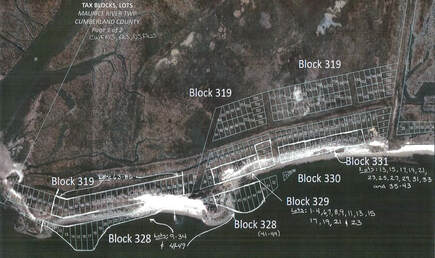 Thompsons Beach was once the site of a thriving little community and resort destination of over 100 homes, just north of Cape May Courthouse. However, erosion had already been chewing away at the shoreline there, and at many other spots on NJ's Delaware Bayshore, before a 1950 tidal wave - caused by wind, rain and exceptional tides - swept away most of the houses. Subsequent storms eventually drove out all the residents (the last one left in 1998), leaving only a stone fireplace and a few wooden pilings as a reminder of the former human inhabitants. Unfortunately, erosion didn't stop when the people left. So, when Hurricane Sandy struck in 2012, beaches on the bayshore - including Thompsons - were stripped of sand and covered with rubble, leaving no place for horseshoe crabs to consummate their annual mating ritual. The eggs laid by female crabs are crucial to another annual rite, the journey of migratory shorebirds - like the Red Knot - from places as far away as Tierra Del Fuego to Arctic breeding grounds. In order to protect that web of life, the Littoral Society and partners began restoring beaches along the NJ side of the Delaware Bay. 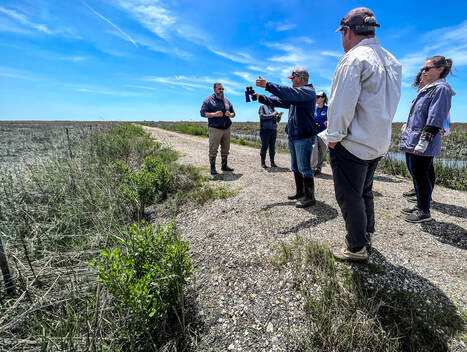 After removing tons of rubble and replacing the sand, the Society's Habitat Restoration crew - with the help of partners and countless volunteers - began installing intertidal shell reefs to reduce the force of waves, help slow the pace of erosion, and protect the marshes behind the beaches. Salt marshes and other wetlands not only absorb carbon dioxide, one of the greenhouse gases fueling climate change, but also provide shelter for about 40 percent of the planet's life while protecting surrounding areas from flooding and the effects of severe storms. These days, the only access to Thompsons Beach is a narrow dirt road that initially passes through a corner of the Heislerville Wildlife Management Area. On the walk along that road, we initially looked at the Society's marsh restoration project. Due to many years of salt hay farming, the sites at Thompsons Marsh - like many of the marshes in the Delaware Bay area - have had difficulty remaining high enough above the water line to support the plants that stabilize the land and provide habitat for other creatures. The marsh project involved dredging the creeks on either side of the project area and using the sediment to raise the wetlands. While more work needs to be done, the results are obvious. Besides growing vegetation in the marsh, Thompsons Beach has had among the highest abundance of horseshoe crab egg clusters of all the beaches we monitor on Delaware Bay. 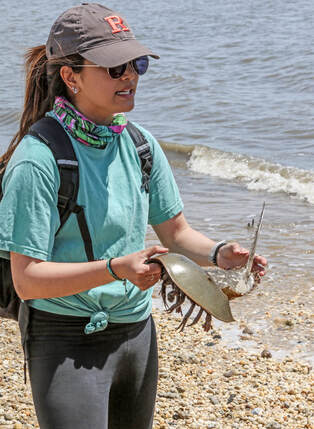 Although we couldn't see the reef off Thompsons Beach (one of eight that have been installed since 2014) during the visit, thanks to the high tide, there were plenty of crabs on the sand and the nearby marsh, as well as a number of shorebirds - including a few Red Knots. The Delaware Bay shoreline provides the single most important spring stopover area for the Red Knot, which is listed as a federally threatened species under the United States Endangered Species Act due to severe population decline, hosting up to 90 percent of those that pass through North America. After hearing a presentation about horseshoe crab history and physiology (including their many, amazing eyes), we took a hour to tag a number of those living fossils before making our way back the parking area. Delaware Bay is home to the largest Atlantic horseshoe crab population in the world. The creatures, which aren't really crabs, have survived nearly unchanged for about 400 million years. The spawning season of the horseshoe crab is the only time they come ashore. The Littoral Society and other organizations tag crabs in order to help determine populations and movement patterns. While the horseshoe crab is not currently endangered, harvesting and habitat destruction have sharply reduced horseshoe crab numbers from levels measured in the 1990s. However, they appear to be holding stable at this lower population level thanks in part to protections championed by the Society. You don't have to be on the Littoral Society staff in order to tag horseshoe crabs. The Society offers tagging experiences in the Delaware Bay region and around the Shark River Inlet during May and June. You can register to participate in Delaware Bay horseshoe crab tagging at https://www.horseshoecrabtagging.org/ or Shark River at https://www.littoralsociety.org/shark-river-crab-tag-main.html. The Society also hosts horseshoe crab walks at Sandy Hook and the Jamaica Bay Wildlife Refuge. Find information about those and other Littoral Society excursions, activities and projects in our monthly e-newsletter.
Jesse Tice
5/26/2022 11:35:13 pm
Found A tagged crab today 5/26 at the bug light sandy hook NJ beach H 5/27/2022 09:37:58 am
Did you happen to snap any pictures or get any information from the tag? If you did, you can send them to [email protected] and I will pass them on to our tagging teams. Comments are closed.
|
Archives
July 2024
Categories
All
|

